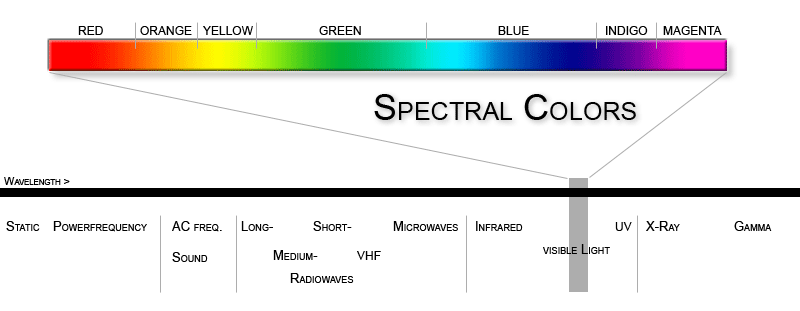
Introduction

WYSIWYG, innit?
No.
Not really...
What exactly i mean needs some scientific backup, so let´s have a look
at some basic science.
Seeing:
The human eye decodes the reflections of electromagnetic waves from different
objects and sends this data to the brain where the images are being formed,
after running through a set of experience-related filters.
Our retina is made up from cones and rods. The cones are placed in the center
of the retina, most concentrated in the "fovea centralis". Rods are
widely distributed over the retina except for the fovea centralis where they
are completely absent. The cones are carrying photoreceptors for the waves we
call red, green and blue(colors) whilst the rods are not sensitive to color
at all.
Cones are on the job when the intensity of visible radiation is quite high (much
light) while rods jump in when radiation levels sink (low light).
A cone can be seen as a nerve cell that fires when it is hit by a certain wavelength
- response of all three types of cones translates roughly as the RGB-model.
Our lens (a prime, as we
know is best ;-) ) seems to have been calculated quite sloppy, focusing on an
object only focuses one dominant wavelength - other visible wavelengths are
"displayed" out of focus.
Like those flashy LCD-displays our eye is weakest in resolving blue to cyan
and quite good in orange and red. While Eizo has worked on this problem and
brought out a nice series of blue/cyan capable displays no remedy for our eyes
is in sight - so don't hold your breath.
Why can't we render blues as we can reds? The amount of color sensitive photoreceptors
on our retina is uneven - 64% red, 32% green and only a meek 2% for blues (mathematically)
show the answer. Distribution of these over the retina is also a point - in
the center are the reds, around these the greens and only on the outer rim the
blues. Response for blue should be really close to very little, but although
the data for the final image in the brain yields as high bluish portions as
the other wavelengths. This seems due to some kind of "boosting" mechanism
science does not know much about.
So
it would seem that noise is an issue with our own imager too, try for yourself,
go out on a clear night and stare up into the sky - i´d need a good noise
reduction for that ;-)
Rays:
The whole spectrum of known electromagnetic waves goes from 0 Hz up to 10power
of 21 Hz.
Rough overview:

0 Hz: static fields, like
the electric and magnetic field of earth
- 30 kHz: low frequency like in weather fronts, electric generators and our
AC/DC net
- 300 MHz high frequency like in thunderstorms and radio waves (LW, MW, VHF
and UHF)
- 300 GHz microwaves like in the satellite- and heating-technology
1mm - 100nm optical radiation. Courtesy of the sun.
1mm -780nm infrared radiation. All heat sources are found here.
The "near" infrared band ranges from 780nm to about 1400nm, from 1400nm
to 1mm lies the "far" infrared band which you cannot make visible
by optical means.
780nm - 380nm visible light.Hey, this is us, herein our eye is able to decode
the waves into visual information.
380nm - 100nm ultraviolet radiation. Another, very demanding field to which
i will tend in a separate document.
Along the from here higher and higher swinging waves we find soft and hard x-rays,
gamma rays (radioactivity) and cosmic radiation.
Our human eye is only able
to decode wavelengths of electromagnetic waves in a band from about 380nm up
to 780nm.
Below and beyond that range there is only night for us - not quite, and here
our journey starts.